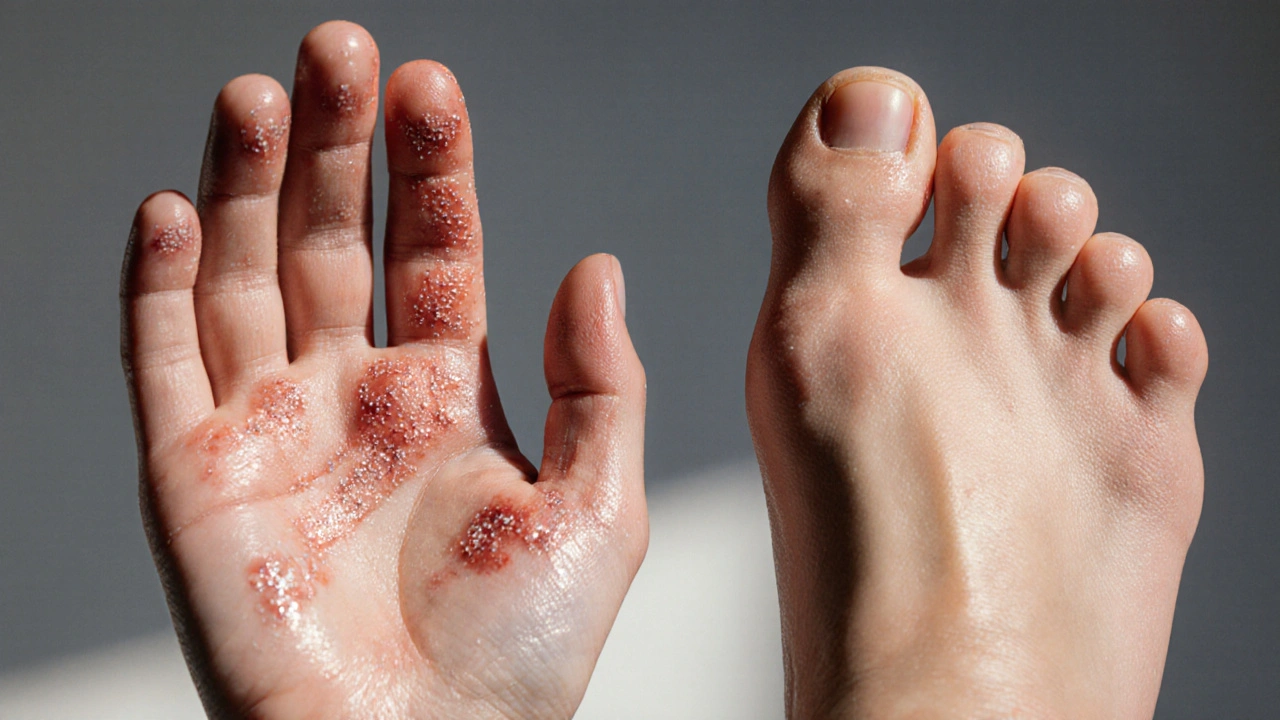Plaque Psoriasis Feet: What You Need to Know
When dealing with plaque psoriasis feet, a chronic skin disorder that creates thick, scaly plaques on the soles and toes. Also known as foot psoriasis, it can cause itching, cracking, and pain that makes everyday walking uncomfortable.
Think of plaque psoriasis, the broader condition marked by raised, inflamed patches on skin as the parent disease. When the lesions settle on the feet, they inherit the same immune‑driven inflammation but face extra challenges from pressure and friction. That’s why the foot variant often needs a slightly different care plan than psoriasis on other body parts.
Getting a clear diagnosis is where dermatology, the medical specialty focused on skin, hair and nails steps in. A dermatologist will examine the pattern of plaques, possibly do a skin biopsy, and rule out fungal infections that can look similar. Early professional input speeds up treatment, reduces the risk of secondary infections, and helps you understand how the condition fits into your overall health picture.
Topical steroids are often the first line of defense. Halobetasol, a high‑potency corticosteroid used in short bursts to calm severe plaques can shrink the thickened skin and relieve pain within weeks. It’s usually combined with a moisturizer to prevent the skin from drying out. Using halobetasol correctly—applying a thin layer once or twice daily and following a tapering schedule—keeps side effects like skin thinning at bay while delivering strong anti‑inflammatory action.
If steroids aren’t enough, phototherapy, controlled exposure to UV light that slows skin cell growth becomes an option. Light therapy can reach deeper layers of the foot skin where plaques are thickest, reducing redness and scaling without the systemic impact of oral meds. Many clinics offer targeted narrow‑band UVB for the feet, and patients often notice improvement after a series of sessions.
Beyond medication, everyday foot care makes a big difference. Keeping the skin hydrated with fragrance‑free creams, gently exfoliating with a pumice stone, and wearing breathable shoes lower friction that can aggravate plaques. Some people find that soaking the feet in lukewarm water with oatmeal or colloidal oatmeal products eases itching and softens scaling.
Watch for warning signs that signal a need for a treatment change: sudden spreading of plaques, intense pain, pus‑like discharge, or cracks that bleed. These may indicate infection or that the current regimen isn’t controlling the inflammation. A dermatologist can then adjust medication, consider systemic options like biologics, or advise on surgical removal of stubborn plaques.
plaque psoriasis feet affects daily comfort, but with the right mix of diagnosis, topical therapy, light treatment, and foot‑care habits you can keep symptoms in check. Below you’ll find a curated list of articles that dig deeper into each of these areas—whether you’re looking for medication guides, DIY skin‑care tips, or the latest research on emerging treatments.
Managing Plaque Psoriasis on Hands and Feet: Practical Tips and Treatments

Learn practical steps to control plaque psoriasis on palms and soles, from daily moisturising routines to effective topicals, lifestyle tweaks, and when to seek dermatologist help.
